
The Healthcare industry has changed beyond recognition over the last few years and is still undergoing a major evolution. Digital innovations allow the automation of many processes. It helps reduce paperwork, administrative burdens, and the need for constant offline contact. Such transformations seem particularly relevant in the era of pandemics and the chronic diseases’ significant increase. Medtech solutions can provide a comprehensive approach to many industry issues, relieving medical staff and patients’ numerous pains.
mHealth (Mobile Health) applications are a key component of these solutions. They are becoming an integral part of various processes, including doctor appointments, remote patient monitoring, and hospital software. That’s why mHealth apps development is getting vital and attracts a growing number of investments. Statista claims that in 2016 the mobile health market was estimated at $23 billion worldwide. It is expected to reach nearly $190 billion by 2025. It’s one of the most significant growth levels within the digital health market.
Healthcare app development requires a particularly meticulous approach and a high level of expertise. Let’s reveal its main aspects, stages, and features worth considering to develop an outstanding solution.
Types of Healthcare Apps
mHealth app is a general term that includes various types of software, depending on its key purpose, target audience, and core functions. Separate use cases and services require a particular approach to applications’ design, development, and maintenance. Here are three main types of healthcare applications.
Applications for Patients
This mHealth app is preliminarily focused on providing patients with more convenient, result-driven, and time-saving solutions regarding their well-being. Such applications can serve various patients’ needs, from keeping a health and fitness diary to an accelerated appointment process. Running mHealth software, customers get easy self-operated access to many health-related operations. According to the HIMSS survey, more than 60 percent of patients use digital devices for their health management.

The most common applications for patients are:
- Doctor appointment apps that provide convenient scheduling and e-prescription services.

- Telemedicine apps, used for patient-doctor online communication, remote therapy, and patients’ health monitoring.

- Patient portals provide immediate remote access to any information concerning patients’ health and secure medical data storage.

- Health diaries, used for monitoring and updating information about patients’ current well-being. Such apps may also monitor women’s health and pregnancy, elderly or sick people’s conditions, etc.

- Fitness, meditations, and mental health apps, used for patients’ personal needs concerning physical and mental exercise schedules.

Applications for Professionals
This type of software provides mHealth app solutions for medical staff. They speed up administrative tasks completion, reduce paperwork, and automate many processes. To name a few, these are diagnosing, prescriptions, medical data, care management, patients’ monitoring, etc. In addition, these apps can be useful for all medical specialists, including doctors, nurses, administrators, pharmacists, and laboratory workers. Healthcare professionals can automate many processes and focus their attention on more urgent tasks by turning to digital solutions.
These are the most common apps for medical specialists:
- Remote monitoring systems, used for tracking and analyzing patients’ health conditions. Such apps are often used in conjunction with wearable devices. The use of AI and IoT technologies can be a great boost for monitoring apps.

- Data management software, used for storage and easy access to information related to patients’ well-being (including electronic health records), treatment plans, diagnosis, test results, etc.

Applications for Institutions
Hospitals, clinics, pharmacies, and other medical institutions can use mHealth apps to improve work organization, clients reception, administration efficiency, etc. Such solutions can be driven by efficient software systems that allow administrators to manage and control all corresponding processes remotely.
Reliability-Centered Maintenance provides centralized navigation between certain apps.

Medical billing apps are used for remote access and management of patients’ payments for the services.

- Kiosk software is used for hardware maintenance, updates, optimizations, and security control.

Why Do Healthcare Apps Fail
Building a healthcare mobile app is quite challenging and, in many cases, doesn’t deliver the desired results. The app may simply not meet the customers’ expectations. In addition, the market’s competition is extremely high. So if an app doesn’t do its job perfectly, it can easily be displaced by more successful analogs.
Let’s find out what mistakes are the most typical and how to avoid them.
Goal or scope failures. It’s typical for apps that don’t follow the latest trends and the market’s needs. mHealth products should be convenient and meet the users’ expectations. So before starting the development process, examine the target audience carefully. Also, learn your competitors to understand what are the current trends and the market needs.
Lack of intuitiveness and reliability. Health mobile app development is an extremely responsible goal. First and foremost, your product should make customer lives easier. People want to get fast and clear service, so an overwhelming interface and lack of intuitiveness may be frustrating. Besides, you should prioritize the app’s security and reliability. Dealing with sensitive medical data requires extra attention.
Finally, if you decide to outsource your mHealth app development, ensure that professionals with the proper expertise perform all processes. Finding a dedicated team to build your medical app may be challenging, but it’s the key to success.
mHealth App Architecture & Design
Find the right solution to build a successful architecture of your mHealth application and follow all essential design principles. These are the crucial tasks that determine your app’s success.
Architecture Principles
The core principle of healthcare application’s architecture lies in its unified experience and open-platform nature. All apps and digital tools should be connected to medical institutions’ databases and services. Such architecture strives for balance and consistency, allowing medical workers and patients to get accelerated collaboration results. It can be reached by using a cohesive tech stack. The architecture’s efficiency also helps quickly connect new tools and applications, adapt to change, ensure real-time access and data security. The latest trend in medical app architecture is to keep health data infrastructure on a separate cloud server, using cloud solutions for healthcare.
mHealth application’s architecture should be built around three main principles that medical workers and patients expect: personalization, intuitiveness, and efficiency.
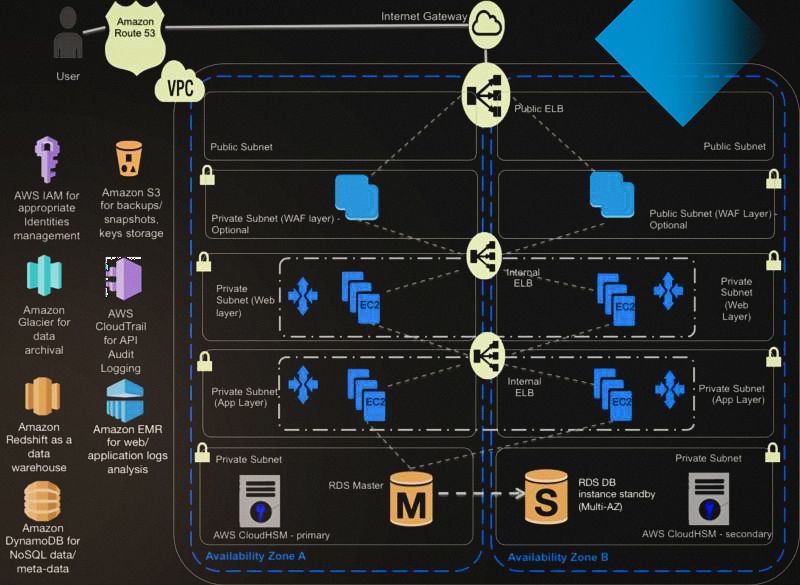
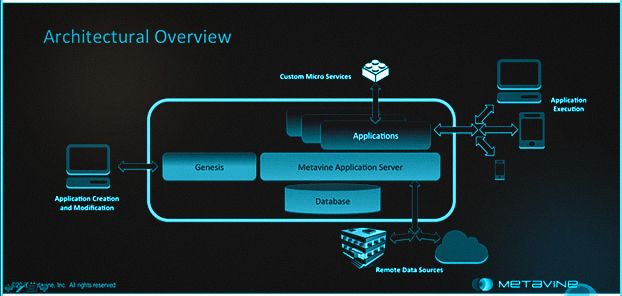

Design Principles
People often imagine healthcare apps as complex, strict, and overwhelming. However, this description is quite the opposite of mHealth design principles. Minimalism, usability, and interface friendliness are crucial when creating a healthcare mobile app. It should be easy to learn and clear for the users.
Minimalism
The health app’s target audience is wide and diverse. So it’s better to stick to the minimalistic concept that doesn’t overwhelm users. Thus, make the interface look clean and light. There’s no need to add too many details and distractive elements. Let the users focus on the main goal of the application.
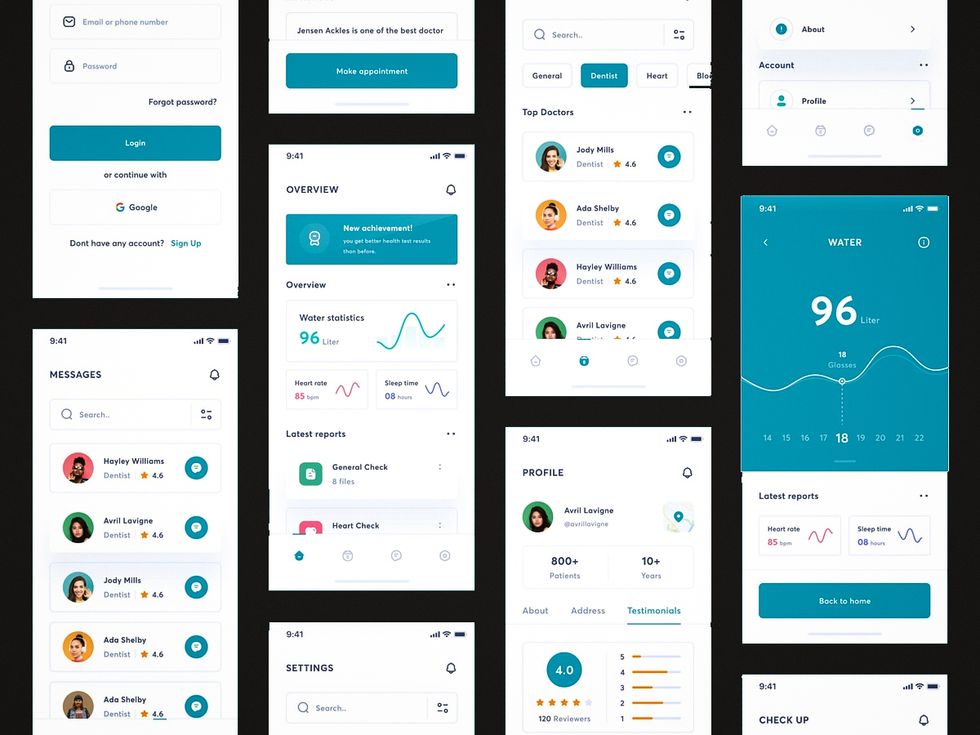
Interface Intuitiveness
Interface intuitiveness is particularly important for healthcare apps. The users shouldn’t experience any difficulties and waste time learning how to operate the app. Ensure that buttons, navigation, and the whole interface are designed in a common manner. The user experience should be smooth and friendly since you provide it for an audience of different ages and capabilities. Initially, designers have to create comprehensive Sign-up and Log-in features. Fast registration and clear onboarding will make a good first impression.

Personalization and Customization
To approach the audience and make customers satisfied, make your mHealthcare app friendly and convenient. The users should feel that it was built exactly for their individual needs. Personalize user experience by implementing custom features. Allow everyone to optimize and control the app’s functions and displayed data. You can provide custom dashboards, modules, and graphics. Letting customers operate your app freely and adapt it for personal use.

Features
There is a long list of features that may benefit your mHealth app. Some of them are essentials. The others may vary depending on your purpose and target audience. Here are some of the basic functions that mobile healthcare applications normally provide:
- Comprehensive Sign-up and Log-in
- Users’ profiles (both for patients and doctors)
- Booking appointments
- E-Prescription
- Tracking (for patients’ condition verification, including wearable devices tracking)
- Video-conferencing for online consultations
- Notifications, messaging, and real-time reports
- Custom dashboard
- Electronic health records and other data integrations
- Payment system integrations
- Hospital staff management features
- Security and privacy features (in compliance with HIPAA, GDPR, and FDA standards), particularly for CRM software.

Your mHealth app can also benefit from implementing advanced innovations such as VR (Virtual Reality), AR (Augmented Reality), AI, RPA (Robotic Process Automation), etc. These technologies are growing their impact on telemedicine and are likely to become an integral part of the healthcare industry in the nearest future.
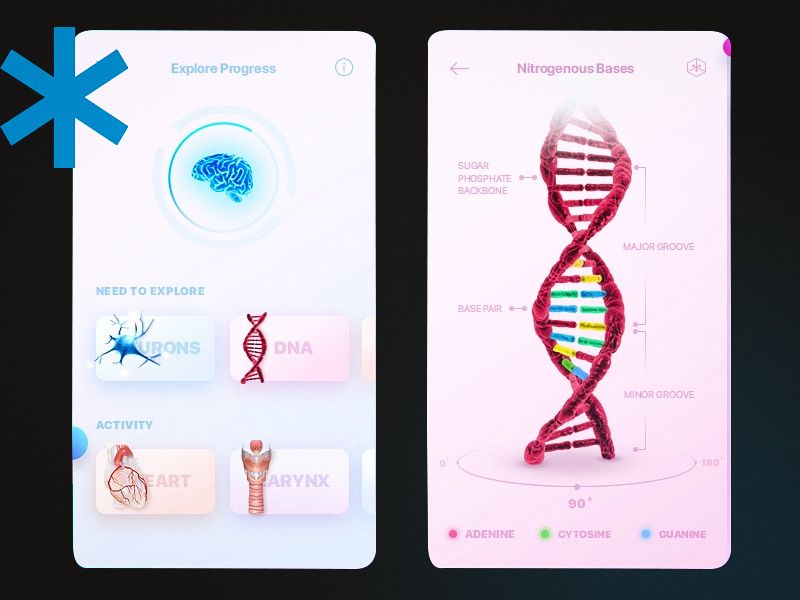
Healthcare App Development Tech Stack
Choosing the most suitable tech stack is one of the most important stages of mobile health app development. The choice will majorly depend on a few factors that you should consider:
- The type, purpose, and required features of your app. There are many different technologies out there. Choose the stack depending on your goals.
- The stack’s popularity. It’s important to focus on the options that have a large developer community. Also, pay attention to the competitors’ choices. Successful healthcare apps can be a good reference point.
- The technology’s reliability and future-proof qualities. The medical sector and telehealth are constantly changing. Assure that you won’t regret your choice in the future.
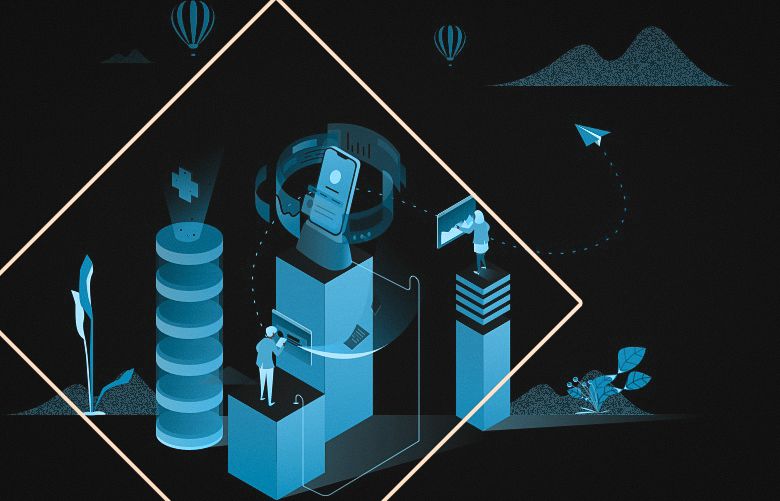
BaaS Solutions
Implementing back-end systems is a time-consuming and complex process. It requires hiring a professional team to build the software from scratch and then perform constant maintenance. Since front-end development needs no less attention and effort, BaaS solutions are a great option to save your time and focus on primary goals. You can entrust your app’s back-end development and further maintenance to a third-party provider.
BaaS is a cloud model that can provide your healthcare app with the following services:
- Database management
- Secure data storage in compliance with HIPAA standards
- Push notifications
- APIs and SDKs infrastructure
Front-end Tech Stack
Choosing a tech stack for front-end development is particularly important as it directly affects your app’s efficiency for the users. Most of the mHealth app developers prefer working with trending technologies that can bring to life all features essential to your software type. Here are the most popular options, depending on the chosen platform.
IOS
Swift is the most widespread tech stack for the IOS platform. However, there are some other options like HealthKit, specifically created for health and fitness data access.
Android
The most popular tech stacks for the Android platform are Java and Kotlin. Both are highly portable and secure.
Cross-Platform
The main options for hybrid healthcare app development are React and Flutter. They guarantee code stability and fast rendering.
Building mHealth app MVP
Building a healthcare application MVP (Minimum Viable Product) can benefit your product development in many ways. It’s the first version of your app, which includes only basic features and core design elements. Thanks to the early MVP release, you can get instant customers’ feedback and determine if your app meets its primary goals. Therefore, MVP development will help you correct potential mistakes and apply the necessary changes in advance.
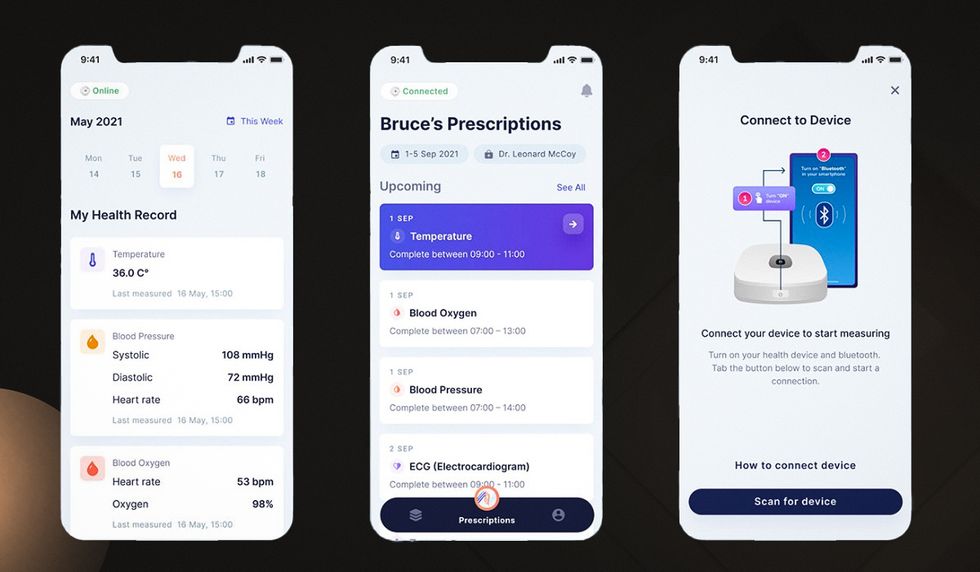
MVP Benefits
Testing the basic services of a medical app is especially important since your target audience’s needs are the main priority. Supposing you are currently building a doctor appointment app. Its first users will get the initial version of your product and test how the essentials work. Is it easy to find the necessary physician? Can they book an appointment and message the specialist? Is the navigation clear? Do all the functions work properly? Answers to these and many other questions will provide you with vital information about your product’s strengths and weaknesses.
MVP will also significantly reduce time to market and costs, which is extremely important for bootstrapping.
MVP Challenges
Here are a few main challenges of MVP development and tips on how to get through.
- Hiring the wrong team. MVP is not a full-fledged app, but it still requires a professional approach. Find the right team of mobile health app developers. Don’t compromise the quality.
- Implementing too many features. Don’t try to stuff your MVP with advanced functions you would like your app to have in the future. Focus on the essentials.
- Selecting the wrong tech stack. The technology you choose for your MVP affects the further steps of the app development. Make sure it suits all the features you want to implement.
Company Experience: Acropolium
We at Acropolium have successfully delivered more than thirty solutions related to the healthtech industry. These three case studies may help you better understand the milestones and core stages of medical app development.
Addiction Recovery Mobile App Development
This project’s goal was to create a custom addiction recovery mobile application for a private psychological center. This mHealth app was supposed to be completely anonymous, serving the needs of people with various addictions. We came up with a solution to build a hybrid software set to identify mental issues and addictions. Also, it had to reduce offline communication and provide the required assistance.
We had a limited timeline to launch the app and increase the patient flow. Our developers’ team used the BaaS platform service, which helped us reduce the time by 40% and focus solely on front-end solutions. Then, we developed a recovery application that would allow users to complete drug tests and communicate with doctors and healthcare organizations. It also enabled spotting illegal points of drugs and alcohol distribution.
As a result, the flow of new clinic patients increased by 36%, while the project’s budget was reduced by 40%, thanks to BaaS.
Dental Clinic Mobile App Development
This internal project aimed to create a convenient tool for dental clinics. Its purpose was to show the initial state of the clients’ teeth, build alternative treatment plans, and calculate their duration. The app can also project the jaw, set control over the teeth, adjust posts and implants, and more. Overall, we wanted to build an mHealth mobile app to make dentists’ and their patients’ lives easier. Our main challenge was to make the application that would both process and visually demonstrate the treatment results. In addition, it had to enable patients to store their visit cards online.
We came out with a solution to provide patients with electronic cards that contain all medical records, including initial state description, treating plan, and X-rays. With the help of this app, doctors can also view the number of clients per day.
As a result, we developed an app that can increase patient flow, improve the clinic’s services, and automate paperwork.
HIPAA Compliant Medical App Development
The client entrusted us with this project which required significant optimization and code improvement. This mHealth app’s main goal was to provide clients with a completely private and secure sexual health management tool. One of the main requirements was to follow HIPAA standards according to US law. With this app’s help, the clients would be able to view their STD status, share results with their partners, schedule testing, and have online conversations with the providers.
We had to conduct a complete audit, improve the code, and make the system scalable. The project’s challenges were technical debts and a lack of appropriate documentation. Our developers’ team managed to optimize the code quality, prepare the system for further scaling, and provide the functions for HIPAA compliance.
As a result, our effort helped to reduce the IT budget by 40%, save 56% of the time, and increase customer loyalty by 38%.
Transform Your Business with Custom mHealth Solution
Due to the rapid growth of telehealth and digital products serving the Healthcare industry, mHealth solutions are in high demand. There are various types of medical apps, depending on the audience and purposes they serve. Thus, the first thing you need to do is analyze the target audience, their pains, and needs. Secondly, it’s important to choose the right approach to build a consistent architecture for your mHealth app. When designing, select the necessary features and create an interface that will be convenient and user-friendly. Choose a future-proof tech stack. Finally, hire a dedicated team to build an MVP of your product.
Medical app development is a complex task that requires relevant experience and effective solutions. Acropolium is a decent healthcare mobile app provider with a wealth of essential expertise in building custom healthtech software. We’ve worked on many different healthcare projects, including telehealth, telemetry, data storage, patient portals, and more. If you have questions concerning mHealth solutions or any related services, feel free to get in touch.









![Legacy Systems in Healthcare [Maintain or Replace]](/img/articles/legacy-systems-healthcare/img01.jpg)
![AI in Healthcare: Examples, Use Cases & Benefits [2025 Guide]](/img/articles/ai-in-healthcare-examples-use-cases-and-benefits/img01.jpg)
![Chatbots in Healthcare [10 Use Cases] + Development Guide](/img/articles/chatbots-in-healthcare/img01.jpg)
![Doctor On-Demand App Development [2025 Guide]](/img/articles/doctor-on-demand-app-development/img01.jpg)
![Big Data in Healthcare: [Use Cases & Applications for 2025]](/img/articles/big-data-in-healthcare/img01.jpg)
